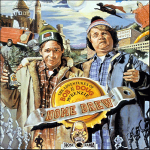The shell path for a user in macOS is a set of paths in the filing system whereby the user has permissions to use certain applications, commands and programs without the need to specify the full path to that command or program in the Terminal. So instead of running something like this, with a path to …
Read More
Set up Virtual Hosts on macOS Catalina 10.15 in Apache
Setting up Virtual Hosts in Apache on on macOS Catalina is straight forward after you have your local Web Development environment up and running – get your web development up and running first including Apache, PHP and MySQL on macOS following this macOS Catalina Apache/PHP/MySQL guide here if required. The process of setting up Virtual Hosts is done …
Read More
Installing Homebrew on macOS Catalina 10.15, Package Manager for Linux Apps
The easiest way to install a number of Unix style applications and open source software onto macOS Catalina, Mojave and earlier Sierra OS versions is via a package manager, unfortunately, macOS Catalina doesn’t come with one, but fortunately, some good folks care, they come in the form of Homebrew. The install of Homebrew also works on …
Read More
Where is the bash shell in macos Catalina?
The bash shell in macos Catalina has been demoted to the subs bench with the newer zsh shell is now the default shell in use by the new operating system. Also known as the Z shell, it has been around a while, since 1990 (bash was 1988), it is still a Unix based shell and …
Read More
Install Apache, MySQL, PHP on macOS Catalina 10.15
Get your Local Web Development Environment Up & Running on macOS Catalina 10.15 With Apples’ new macOS Catalina 10.15 available for download, here is how to get the AMP stack up and running on the new macOS. This tutorial will go through the process of getting Apache, MySQL, PHP (or otherwise known as the ‘AMP’ stack) and phpMyAdmin running on the new mac OS Catalina. This tutorial …
Read More
Switch an App back from Dark to Light Mode in macOS Mojave
In macOS Mojave you can enable Dark Mode via System Preferences > General > Appearance > Light or Dark – but this is a one monolithic change for the macOS and any supporting Apps, what about changing the Dark Mode for separate unique Apps whilst keeping the macOS in Dark mode? You can do so …
Read More
How to Write to Windows NTFS USB Disk Drives on macOS Mojave and Sierra
By default, you can’t write to Windows NTFS USB drives and hard disks on macOS as they appear as read-only on the Desktop. You can write to these disks with a few installs and tweaks in the Terminal, which will make all NTFS drives writeable – there are also some commercial point and click apps that can …
Read More
Install Git on macOS Mojave and earlier, and Update to latest version
Install Git on macOS Mojave, Sierra, or an older Mac OSX version by getting the latest git version from the Git home page or from the direct macOS latest link.







